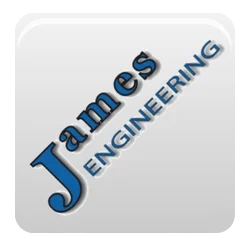How Automated Deburring Systems Revolutionize Manufacturing
In manufacturing, efficiency and precision are paramount. Any process that can streamline production while maintaining quality is highly sought after. One such innovation making waves in the manufacturing industry is automated deburring systems. These systems, including both automated deburring machines and automated chamfer machines, are revolutionizing the way manufacturers handle post-processing tasks. Let's dive into what these systems are, how they work, and the benefits they offer.
Spiral Bevel Gear from an attack helicopter. This is a life critical part. Before we were introduced to the client; they were having component failures; the teeth were breaking from stress risers around the tooth. After we chamfered and brushed all the features on the part, the failures were eliminated. James Engineering Photo
Understanding Automated Deburring Systems
Deburring is a crucial step in manufacturing, particularly in industries like automotive, aerospace, defense and medical device, where precision is non-negotiable. After parts are machined, they often have sharp edges, burrs, or imperfections that need to be removed for safety, functionality, and aesthetics. Traditionally, deburring was a manual or semi-automated process, requiring skilled labor and significant time investment.
Automated deburring systems, on the other hand, utilize advanced technology such as multi-axes, and precision machining techniques like Focused Deburring to automate and streamline the deburring and manufacturing process. These systems are equipped with specialized tools and programing designed to remove burrs, chamfer and radius with unparalleled accuracy and efficiency.
The Role of Automated Deburring Machines
Automated deburring machines are at the forefront of this technological revolution. They come in various configurations, and with multiple finishing tools. CNC (Computer Numerical Control) machines with deburring capabilities simply can’t deburr, chamfer, radius or polish at the high precision level as dedicated systems. Specialized machines work by precisely targeting and removing burrs from machined parts, then completing the process by chamfering, polishing and washing parts shortening the overall process.
They can handle a wide range of materials, from metals like aluminum and steel to plastics and composites, or soft metals such as die casted or powdered metals, making them versatile across industries. By integrating dedicated finishing systems into production lines, manufacturers can significantly reduce cycle times, improve consistency, and enhance overall product quality.
Twin tower, 5 Axis MAX System with 2 position pallet changer by James Engineering
Advantages of Automated Chamfer Machines
In addition to deburring, chamfering is another essential post-processing step in manufacturing. Chamfering involves creating beveled edges or angles on the edges of parts, enhancing their durability, aesthetics, and functionality. Automated chamfer machines complement automated deburring systems by efficiently performing this task.
These machines utilize precision cutting tools to create uniform chamfers on machined parts. By automating chamfering, manufacturers can achieve consistent results across large production runs, eliminate human error, and reduce the risk of injuries associated with manual chamfering methods.
Diagram showing chamfered angle
Bevel versus Chamfer
Optimizing Manufacturing with Automated Systems
The integration of automated deburring and chamfering systems into manufacturing processes offers several key advantages:
Increased Efficiency: By automating time-consuming deburring and chamfering tasks, manufacturers can significantly reduce production cycle times, leading to higher throughput and improved overall efficiency.
Enhanced Quality: Automated systems ensure consistent and precise deburring and chamfering, resulting in higher-quality finished parts with fewer defects or inconsistencies.
Cost Savings: While the initial investment in automated systems may be higher, the long-term cost savings from reduced labor costs, increased productivity, and minimized rework make them a cost-effective solution for manufacturers.
Improved Safety: By minimizing the need for manual intervention in deburring and chamfering processes, automated systems contribute to a safer working environment for manufacturing personnel.
In this manufacturing flow, OEM James Engineering creates specialized machinery designed for tasks like gear fabrication. Ontario Gear & Drive utilizes this machinery to manufacture precision gears, which serve as critical components in various mechanical systems, including vehicles. These gears are then integrated into the manufacturing process of companies like Argo, completing the supply chain from machinery production to the assembly of end products such as vehicles.
Automated deburring and chamfering systems are transforming the manufacturing landscape, offering unparalleled efficiency, precision, and cost savings. By leveraging the latest advancements in automation and machining technology, manufacturers can streamline their production processes and stay ahead of the competition.
As industries continue to evolve, embracing automation and investing in advanced manufacturing technologies like automated deburring systems will be essential for maintaining a competitive edge in today's fast-paced market.
Learn more about various deburring and chamfering systems here.





